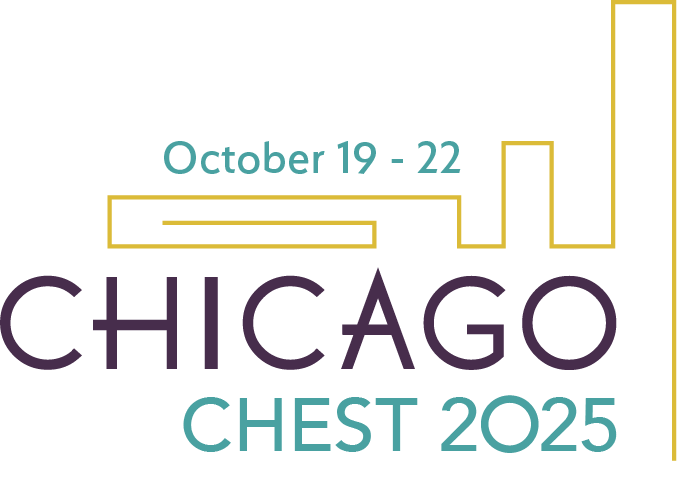Journal CHEST®

Oxygen Saturation Targets and Neurologic Outcomes Following Cardiac Arrest: A Secondary Analysis of the Pragmatic Investigation of Optimal Oxygen Targets Trial
By Stephanie C. DeMasi, MD, and colleagues
Among patients achieving return of spontaneous circulation (ROSC) in postcardiac arrest, oxygen supplementation is a double-edged sword; both hypoxemia and hyperoxia may contribute to organ dysfunction. Hyperoxia, via vasoconstriction and endothelial production of reactive oxygen species, may cause direct neuronal toxicity.1 However, clinical trials examining specific post-ROSC oxygen targets have been conflicting.2,3
In a secondary analysis of the Pragmatic Investigation of optimaL Oxygen Targets (PILOT) trial, DeMasi and colleagues identified 339 patients who were suffering from cardiac arrest and receiving invasive mechanical ventilation, with 221 assigned to a lower or intermediate oxygen saturation (SpO2) target (88% to 96%) and 118 assigned to a higher target (96% to 100%). Those assigned to a lower or intermediate SpO2 target were more likely to achieve a favorable neurologic outcome with a Cerebral Performance Category of 1 or 2 at hospital discharge (OR, 2.00; 95% CI, 1.07-3.76; P = .03).3
By contrast to prior studies, in-hospital patients with cardiac arrest without a shockable rhythm accounted for the majority of the population; values of SpO2 and FiO2 were obtained every minute, providing for granularity; and patients were captured in the early period when the detrimental effects of oxygen may be most pronounced.3 As the authors suggested, perhaps it is time for a randomized trial focused on the specific population of in-hospital cardiac arrest without a shockable rhythm.
Commentary by Eugene Yuriditsky, MD, FCCP, Member of the CHEST Physician Editorial Board
CHEST® Pulmonary

Delays in Referral to Multidisciplinary Care for Black Individuals With Sarcoidosis
By Kristen R. Mathias, MD, and colleagues
This retrospective, single-center cohort of 207 patients referred to a sarcoidosis center of excellence in 2021 demonstrates substantial delays in specialty referral. The median interval from diagnosis to referral was six years, with Black patients experiencing significantly longer delays than White patients (nine years vs five years). In adjusted analyses, White patients remained more than twice as likely to be referred sooner. Notably, 78% of those referred had a change in management, highlighting the clinical importance of timely evaluation.
Methodological issues, however, temper interpretation. The analysis includes only patients who were ultimately referred, excluding those never referred—likely underestimating the true burden of delay. Referral itself represents a self-selected, highly complex population, skewed toward individuals with severe or multisystem disease. This makes it difficult to generalize findings to all patients with sarcoidosis. Disease phenotype, rate of progression, or distribution of complex cases across racial groups may also influence referral patterns. Finally, the study focused on referral timing but did not assess outcomes such as hospitalizations, progression, or survival, which—even if measured—would be subject to ascertainment bias.
The central message remains that referral delays are substantial, disproportionately affect Black patients, and frequently precede significant management changes.
Commentary by Priya Balakrishnan, MD, MS, FCCP, Member of the CHEST Physician Editorial Board
CHEST® Critical Care

Ascorbate for Organ Dysfunction in Critically Ill Patients With Sepsis: The Phase 2b ASTER Trial
By D. Clark Files, MD, and colleagues
In the recent case of a patient admitted with septic shock requiring vasopressors, our clinical team was asked whether to initiate high-dose intravenous vitamin C. While previous studies spurred some interest, the current evidence shows no clear benefit and even potential harm. The Acetaminophen and Ascorbate in Sepsis: Targeted Therapy to Enhance Recovery (ASTER) trial—a recent randomized, placebo-controlled study—showed no improvement in days free of organ support and no clear mortality benefit. Moreover, the Lessening Organ Dysfunction With VITamin C (LOVIT) trial in 2022 suggested a possible increased risk of death or persistent organ failure in patients with septic shock who received vitamin C. Despite being well tolerated, the intervention lacked meaningful clinical impact. Given these findings, and in alignment with current guidelines, our team pursued evidence-based management. In our minds, the ASTER results prompt a critical question: Has the case for vitamin C in sepsis finally closed?
Commentary by Angel Coz, MD, FCCP, Editor in Chief of the CHEST Physician Editorial Board
References
1. Bray J, Skrifvars MB, Bernard S. Oxygen targets after cardiac arrest: a narrative review. Resuscitation. 2023;189:109899. doi:10.1016/j.resuscitation.2023.109899
2. Schmidt H, Kjaergaard J, Hassager C, et al. Oxygen targets in comatose survivors of cardiac arrest. N Engl J Med. 2022;387(16):1467-1476. doi:10.1056/NEJMoa2208686
3. DeMasi SC, Clark AT, Muhs AL, et al. Oxygen saturation targets and neurologic outcomes following cardiac arrest: a secondary analysis of the pragmatic investigation of optimal oxygen targets trial. Chest. 2025:S0012-3692(25)00553-7. doi:10.1016/j.chest.2025.04.027
